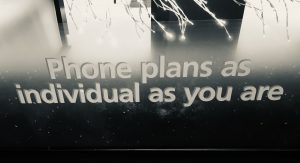
‘The world as we have created it is a process of our thinking. It cannot be changed without changing our thinking.’ Albert Einstein
‘Your life does not get better by chance, it gets better by change.’ Jim Rohn
Business Flexibility and Business Strategy
As market conditions change, business strategies evolve. The rate at which those strategies evolve is a function of business flexibility and its interplay with efficiency and innovation. Clever strategies involve managing a portfolio of options (more about this below), as well as effective & efficient strategic execution.

Business Flexibility Generally
Business Flexibility includes; adaptability, resilience, agility and options. Each has is own measures and together they are mutually-reinforcing elements.
Adaptability includes considering our ability & speed at turning weaknesses into strengths. And our ability & speed to learn from mistakes, whether they occur as injuries or penalties. As an aside, how much do the language and labels we choose, limit our frameworks of understanding? Answer: probably more than we realise. Resilience includes; fitness (strength, stamina and focus), riskflex, persistence & momentum e.g. if loose key staff or suffer a government-imposed lockdown. Agility includes skill at jumping paths and pace. Portfolio of Options is about deliberately developing, managing and deploying a portfolio of options.
Linked to Business Flexibility are staff’s levels of personal flexibility – to embrace new approaches, develop new skills and maintain a high level of faith & trust during periods of turbulence and uncertainty.


(1) Flexitypes (types of business flexibility) that an organisation can systematically look at improving are as follows:
- Communications flexibility
- Design flexibility
- Resource flexibility
- Process flexibility
- Systems flexibility
- Service flexibility
- Product flexibility
- Channel flexibility
- Project flexibility
- Supplier flexibility
- Contract flexibility
- Management flexibility
- Business model flexibility
- Stakeholder flexibility
(2) Riskflex – how do flexiscribes link to business risk & reward? See Flexiscribes-and-Business-Risk
(3) Time/Pace flexibility includes a plan achievable at multiple speeds. Tactical use of time might include; playing for time, buying time or re-inventing time. Some diverse examples (not an exhaustive list) of re-inventing time are;
- Reverse mentoring (young IT savvy workers mentor older workers who have different skills).
- Exploiting customers’ selective memory of history, to sell products or services e.g. a company deliberately marketing nostalgic/vintage/retro products rather than new ones.
- Blurring the boundaries between stages. For example, a restaurant replacing entre, main and dessert courses with a steady stream of small dishes instead.
- Constructing a contract that applies retrospectively, should some future event be triggered.
(4) Plan flexibility – involves developing several, high level plans. And investing in business flexibility to benefit (or increase the chances of achieving) either of them. Some examples of companies exhibiting Plan flexibility; Tesla/Space X, General Electric, Virgin, Dyson and Alphabet.
(5) Options flexibility – involves having one over-arching plan with significant flexibility on the tactics. One example is the Bill and Melinda Gates Foundation approach to Malaria eradication (by all means necessary).
It is possible to invest in Options, Plan and Time flexibility concurrently.
(6) Style flexibility (‘styflex’) is about being flexible on appearance, status or delivery process, where the core identity does not change. A few examples are as follows:
- Unisex office facilities.
- General purpose meeting rooms or classrooms.
- Cars with a choice of colour, manual/automatic or convertible/hard top.
- A hermit crab selecting a bigger shell when it grows bigger.
- A translation service translating one message into multiple languages, without loss of meaning.
- Colour change as exhibited by creatures such as the chameleon and octopus, when they sense danger.
- Human blood groups.
- The human brain’s ability to change emotions and attach feelings to memories.
- People’s ability to express emotions.
- An organisations’ ability to relate to customers or beneficiaries.
(7) Substance flexibility (subsflex) is about creating versatility of the core identity, without varying the style. Some examples as follows:
- The swiss army knife design.
- An amphibious vehicle.
- Highly versatile travel clothing (less is more).
- Different bus routes & timetables.
- A professional services firm offering a wide range of services, at client-defined lengths of assignment.
- The body’s immune system in fighting off disease & healing cuts.
- The human brain’s ability to reason, imagine, rationalise & recall memories.
- People who can speak multiple (coding) languages.
- Staff at a school who can manage and teach.
- An organisation having a range of sanctions for a policy breach.
- Replacement of a once yearly, operating budget with quarterly updated, rolling annual budgets, to cope with rapid changes.
Some things exhibiting both style and substance flexibility together are as follows:
- Buildings in a street or on a university campus.
- A credit card or mobile phone.
(8) Asset flexibility – A manager will hold assets where their expected value in use exceeds their expected value in exchange. The asset holder can increase the value in use, if they find a way to make the assets held more flexible in use (think of designing buildings or software platforms for multi-purposes). Likewise, due to rising flexibility in the form of traded markets for the asset becoming more liquid (less risky), the asset value in exchange can rise too. When the asset holder sells the more flexible asset, if a gain is realised, part of that gain may arise because of the additional flexibility created & made visible, causing demand to strengthen.
(9) Flexiscribes are the devices or mechanisms in an organisation that create business flexibility. Wise organisations develop and manage their flexiscribes, in order to manage business risk and improve business impact.Flexiscribes when triggered, may operate continuously or periodically. They can work alone, or in combination. Flexiscribes are owned or controlled by the organisation. The biological equivalent of flexiscribes are biological genes & epigenes that enable physical characteristics to vary between organisms of the same species.
Flexiscribes can be grouped into three categories; business hygiene ones, business-generated ones and business culture ones. At last count, Sleicest-consulting has identified 10 hygiene ones, 21 business-generated ones and 6 business culture ones. Similarly, under the subject of personal flexibility -(PFL), Sleicest-consulting has identified 8 hygiene ones, 11 self-generated ones and 5 personal ones.
If your organisation has a relatively weak business vision, it’s worth examining three influences on that vision; the organisation’s comfort zone, the ‘vocal minority’ and the infrastructure. It’s then possible to use flexiscribes to:
- improve the organisation’s comfort zone (in setting the vision),
- act on the ‘vocal minority’ (those ‘opinion leaders’ having a disproportionate impact on the decision-making) and
- improve the organisation’s infrastructure (resources, systems & structures).
Business Flexibility and Mass Customisation
With a growing AI influence, we can expect greater personalisation of products & services to occur. No doubt this will also create a revolution in marketing – in marketing channels, market research, segment analysis and promotion. Greater personalisation has at least three strands to it:
- an expansion of the basic menu of options (a range increase for each customer),
- more personalised pricing (real-time credit assessment, personalised payment plans & dynamic pricing),
- more automated provision and delivery.
One way that mass customisation can be enabled is where customers self-select their preferences, perhaps with the help of the organisation’s chatbot. However, having more choice of options isn’t what gives the customers significantly more freedom. Instead, preserving their personal flexibility (while customising their products and services) gives customers the real freedom. What are some examples? Warranties, free trials, flexible financing, free basic versions and control of personal data.
And for the companies? Preserving business flexibility gives them real freedom to operate too. For example, investment in intellectual property, maintaining high cash reserves, managing large datasets and using agile techniques in new product development.
Clearly, for both customers & businesses, business flexibility sits front of stage.

